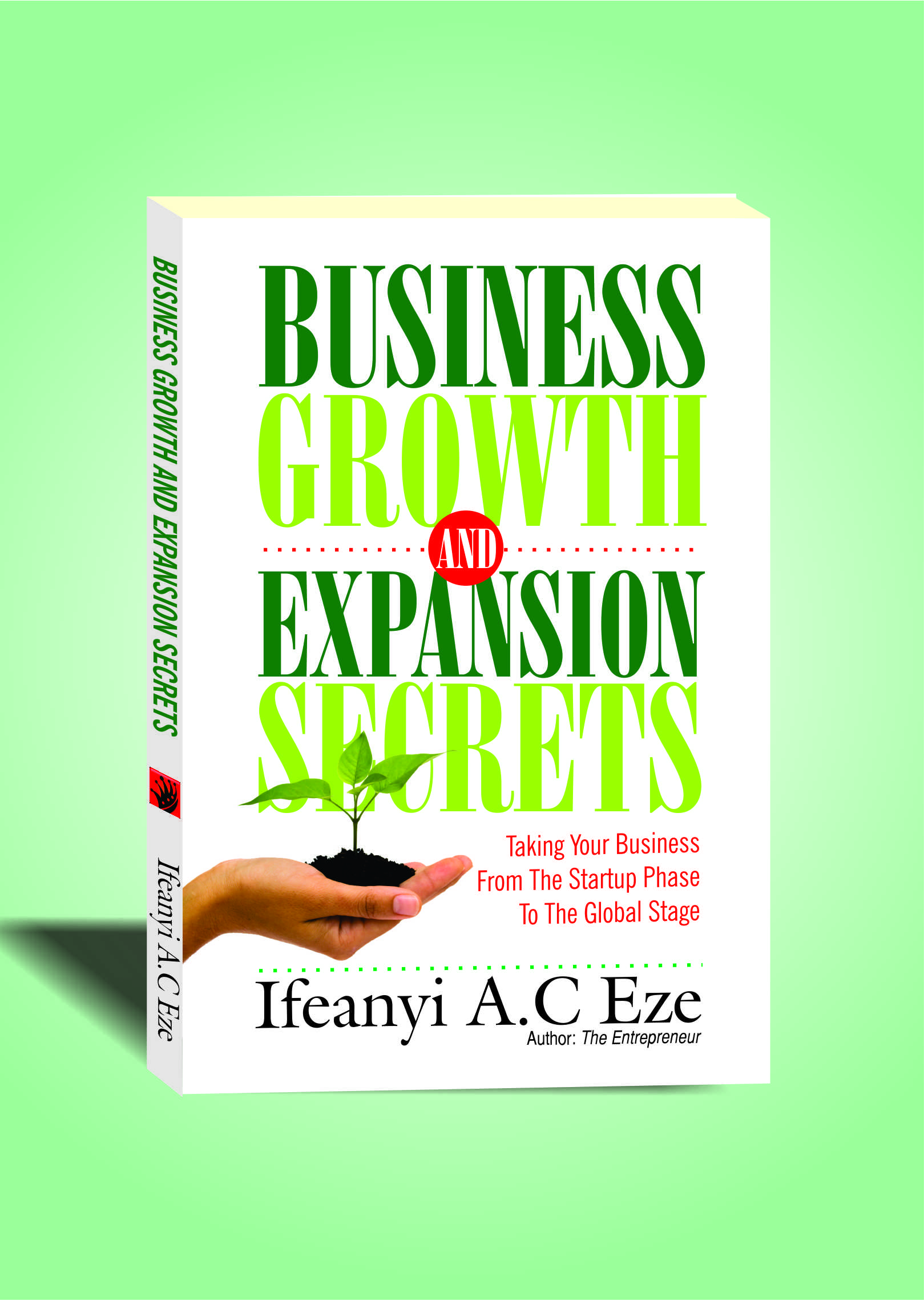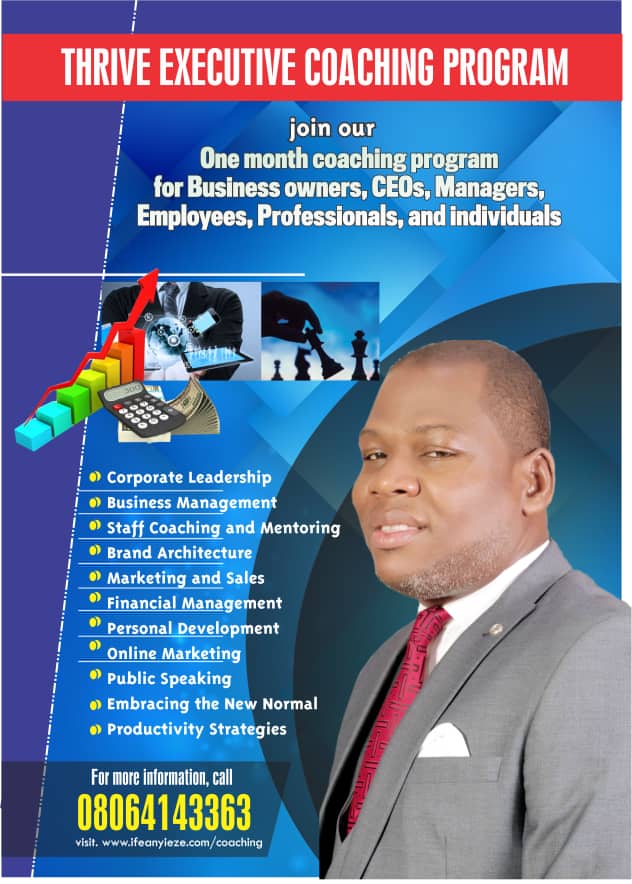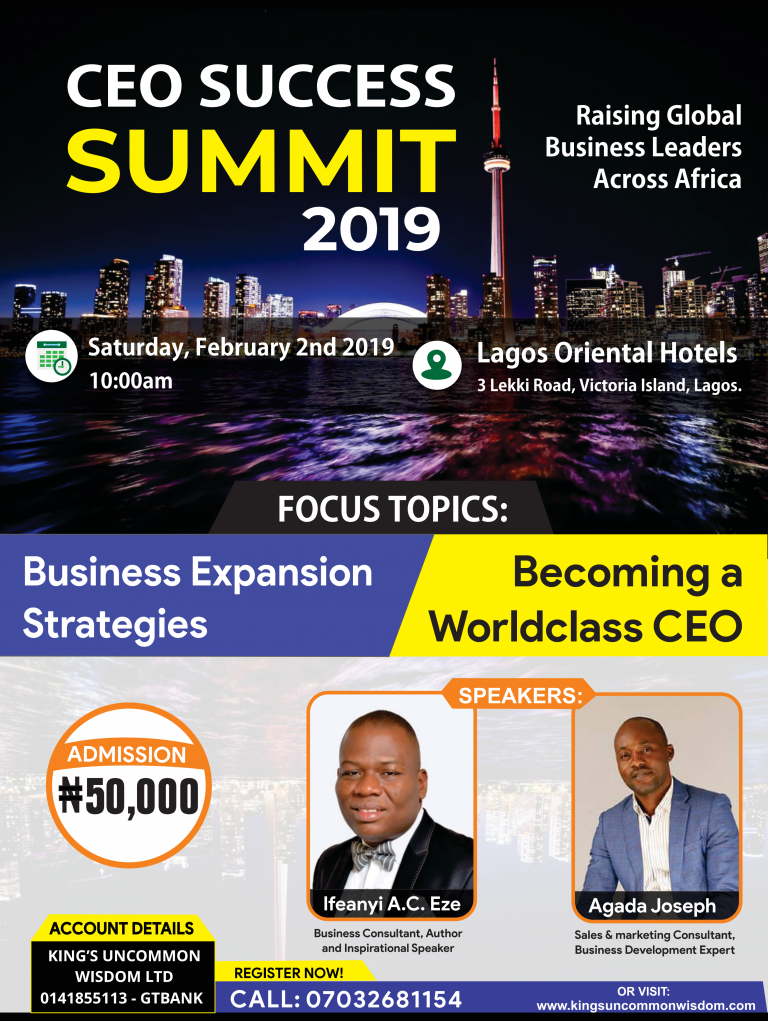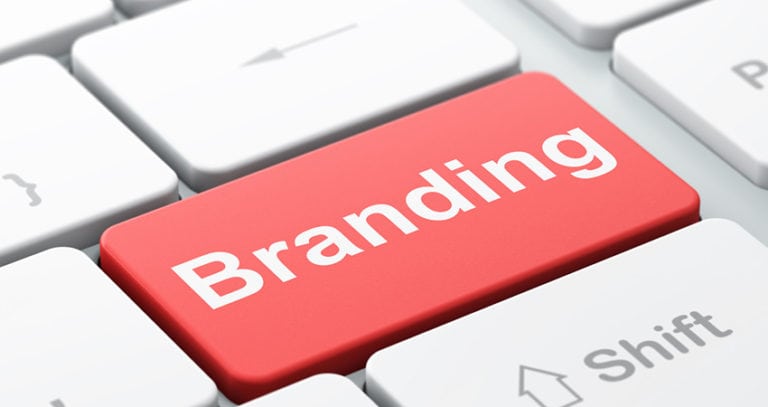How to Deal with Unforeseen Challenges in Business
I think the habit of seeing every problem as satanic attack is hampering the development of Africa. Whoever taught us that failure is evil did not mean well for us. Failure is the breakfast of champions. The more you fail, the faster you run.
In the developed countries, when they encounter problems they start searching for solutions. While we were busy lamenting about Covid-19, they were searching for vaccine to deal with it. While we are lamenting about diseases, they are searching for permanent cure for them. No wonder they rake in billions of dollars in revenue annually. The person who finds a solution to a major problem is the person that will make all the money.

Malaria is a major concern in Africa, but those who are not suffering from malaria are the ones manufacturing malaria drugs and also searching for permanent cure in order to make money from us.
Parents need to train their children to be inquisitive. Parents should stop telling their children that every problem in life is caused by the devil. Once they develop that mindset, they will abandon their responsibility and focus on enemies.
When your business is no longer thriving, kindly sit down and engage in an in-depth analysis to ascertain what went wrong and the strategy you must apply.
I shared the following in my book, 360 Degrees Business Management.
When you are face-to-face with challenges in your business, you must be bold and audacious.

While strategizing, don’t allow present challenges to hinder future possibilities and opportunities. Some business leaders make the mistake of taking rash decisions because of temporary challenges that may affect future opportunities for the organization. That is why it is good to sometimes step aside and look at a challenge as an outsider so that in trying to swim out of a shark infested river, you don’t destroy the river outrightly.
Because I love buttressing my points with true stories, let’s consider a story that will help us to fully grasp the point I’m making. It was shared by Martin Reeves, Knut Haanes and Janmejaya Sinha
“When the financial crisis hit the world markets in 2008, American Express, currently the world’s biggest card issuer, with $950 billion in billed business, faced very difficult circumstances. Defaulters on credit card payments rose sharply, consumer spending plummeted, and the funding markets dried up. In previous recessions, American Express wealthy clientele had kept spending-but not this time.
The circumstances called for a drastic response, and Ken Chenault, American Express CEO, took swift action. He launched an aggressive cost-cutting and restructuring program to focus the organization and to impart a sense of urgency.
Chenault explained to us: “First we had to deal with the cost issue. The environment is such that we couldn’t act the way we did pre-crisis. We had to act immediately-but we had to be thoughtful about it and be governed by both short and long-term considerations.”

He reduced personnel costs, shedding approximately 10 percent of the workforce and temporarily reducing senior management salaries. He lowered marketing expenses and the fees paid for professional services but maintained the budgets for customer service.
Finally, to raise new sources of funding. American Express entered into the deposit-gathering business, and, Chenault said, “in a period of only several months, we raised over $8 billion.”
Organizationally, Chenault focused on role clarity and tight plans with clear success metrics: “Personal accountability was driven down through the organization.” But amid the gloom, he was careful to project a sense of optimism.
Chenault’s swift action saved the day. By the end of 2009, American Express stock had recovered to $40 per share, from a low of $10 in March. American Express was one of the few financial companies to maintain its shareholder dividend and remain profitable throughout the crisis. Five years later, American Express traded more than $90, an accomplishment attributed to the second phase of Chenault’s mantra: the plan for the future growth.
Chenault had led American Express through the crisis before. He took the helm at American Express a few months before 9/11. He knew how the company should react. “While pressure on the bottom line intensified during weaker times, it is shortsighted to slash and burn all growth investments,” he explained. “Doing so will likely put you at the back of the competitive pack when the economy begins to recover and will end up costing you more in the long run.”

While many competitors were still grappling with losses, he focused on building a platform for future growth. He developed a vision of the future, with American Express as not just a card company but as a broader financial services company supported by a strong digital platform, and he invested in technological innovation.
Chenault was inspired by a saying from his lead director, Bob Walter: ‘Keep your nose to the grinding stone and your eyes on the horizon.’ It might be physically impossible, but it’s a great metaphor. It emphasizes the need to focus on the day-to-day, but with a view of, ‘What’s the transformation you’ll bring about?’”
If you take a critical look at what the CEO of American Express did, you will notice that he first of all made a decision for the company’s survival in the interim by plugging the holes to stop financial hemorrhage. You can’t keep behaving the way you did when things were rosy, you must curtail unnecessary expenditures before strategizing for future growth.
It was after reducing running cost and downsizing that he shifted his attention to the growth of the company. That is the proper sequence of decision-making. Deal with issues first, then project forward. Don’t build on a shaky foundation, it will not last.

When a good decision maker is in the helm of affairs of an organization, it can survive in both bad time and good time. But it requires bold decisions. You don’t have to be intimidated by the circumstances you are grappling with; you must find ways to take drastic decisions that may be painful in the interim but profitable in the long run.
If you are struggling to sell your products or services, you should sit down with your team to ascertain the root cause. Is it competition or do customers have better alternative? Keep thinking and analyzing until you ascertain what went wrong and how to correct it.
Albert Einstein said, “We cannot solve our problems with the same level of thinking that created them.”
John Dewey opined, “A problem well stated is a problem haft solved.”
For more on problem solving strategy, order my book, 360 Degrees Business Management.

Also, sign up for our Business Management Coaching right away. Chat with me on WhatsApp immediately.
What did you learn today? Share your thoughts with others at the comment section below.
See you at the top!
Copyright 2021: www.ifeanyieze.com. Reprint, curation, adaptation, or reposting this article without the consent or approval of www.ifeanyieze.comis a copyright theft.







“A problem well stated is a problem half solved ” John Dewey the philosopher.
I like that the most. More wisdom upon you Sir.